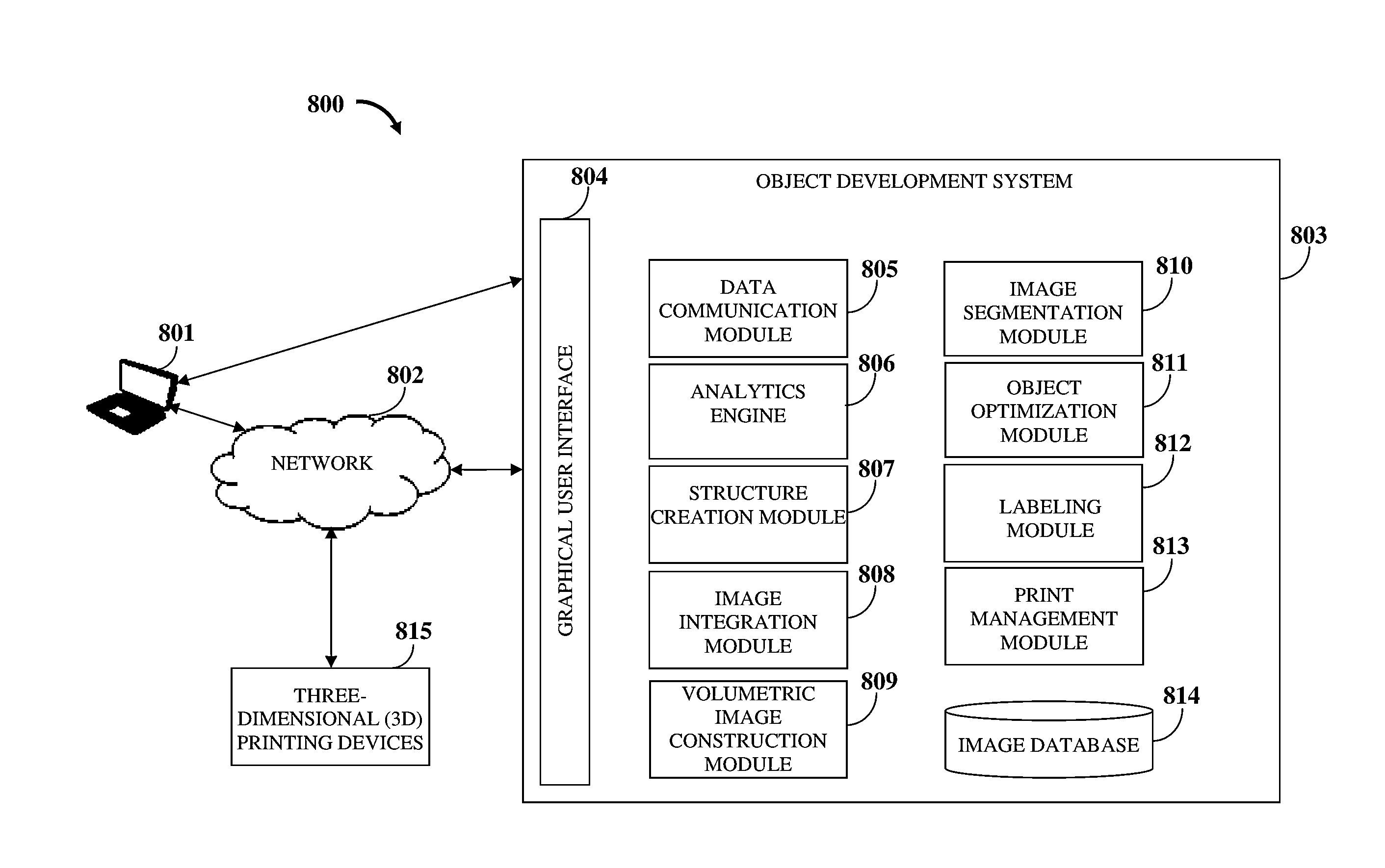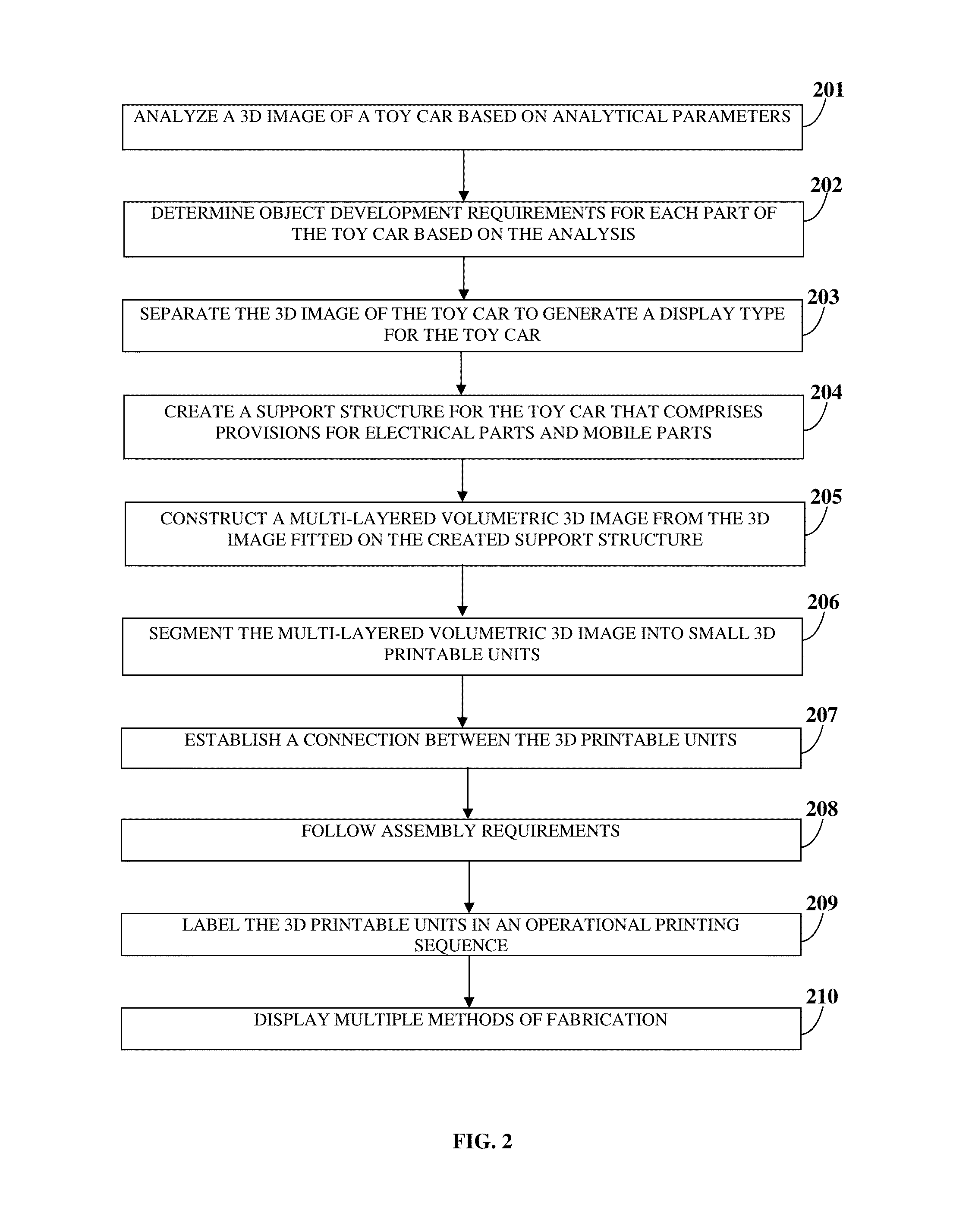Three-dimensional Object Development
a three-dimensional object and object technology, applied in the field of three-dimensional object development, can solve the problems of low user experience, low cost of 3d printing materials for a median income bracket person, and lack of user-friendly software and applications
- Summary
- Abstract
- Description
- Claims
- Application Information
AI Technical Summary
Benefits of technology
Problems solved by technology
Method used
Image
Examples
Embodiment Construction
[0022]FIG. 1 illustrates a computer implemented method for developing a three-dimensional (3D) object. The computer implemented method disclosed herein comprises a disassembling and assembling process that can help reduce cost, and improve quality and efficiency of custom design manufacturing processes of 3D objects. The computer implemented method disclosed herein is used to develop, for example, artistic sculptures and products that are substantially large, require high weighted designs, and are typically difficult to be custom designed and printed using a conventional 3D printer. The computer implemented method disclosed herein employs an object development system comprising at least one processor configured to execute computer program instructions for developing a 3D object. The 3D object is, for example, a commercial use object such as a human size sculpture or another 3D sculpture, a 3D automobile, an air drone, furniture, a house, a 3D gift item, a 3D photograph, a 3D mask, a...
PUM
| Property | Measurement | Unit |
|---|---|---|
| Strength | aaaaa | aaaaa |
| Mobility | aaaaa | aaaaa |
Abstract
Description
Claims
Application Information
 Login to View More
Login to View More - Generate Ideas
- Intellectual Property
- Life Sciences
- Materials
- Tech Scout
- Unparalleled Data Quality
- Higher Quality Content
- 60% Fewer Hallucinations
Browse by: Latest US Patents, China's latest patents, Technical Efficacy Thesaurus, Application Domain, Technology Topic, Popular Technical Reports.
© 2025 PatSnap. All rights reserved.Legal|Privacy policy|Modern Slavery Act Transparency Statement|Sitemap|About US| Contact US: help@patsnap.com



